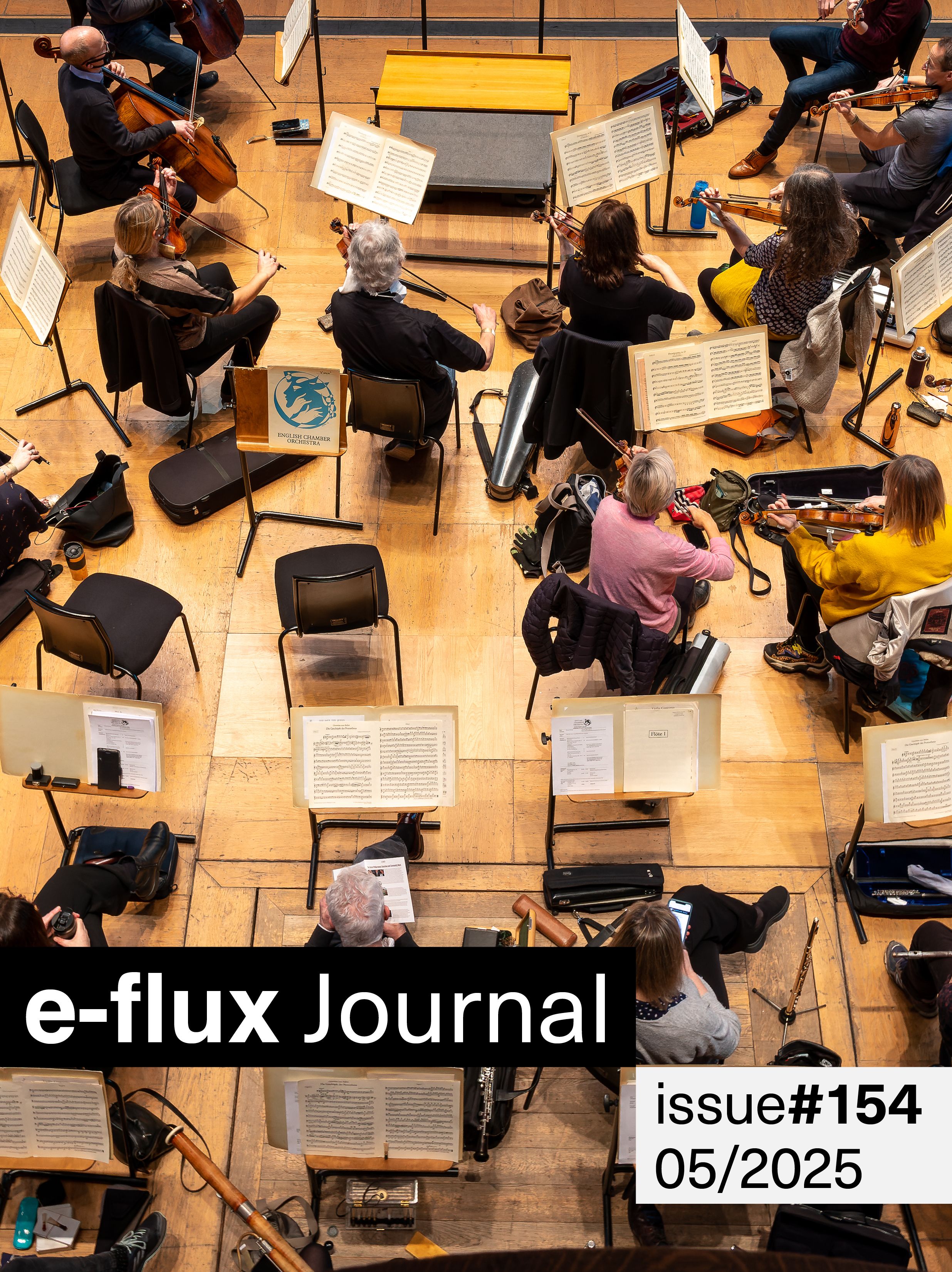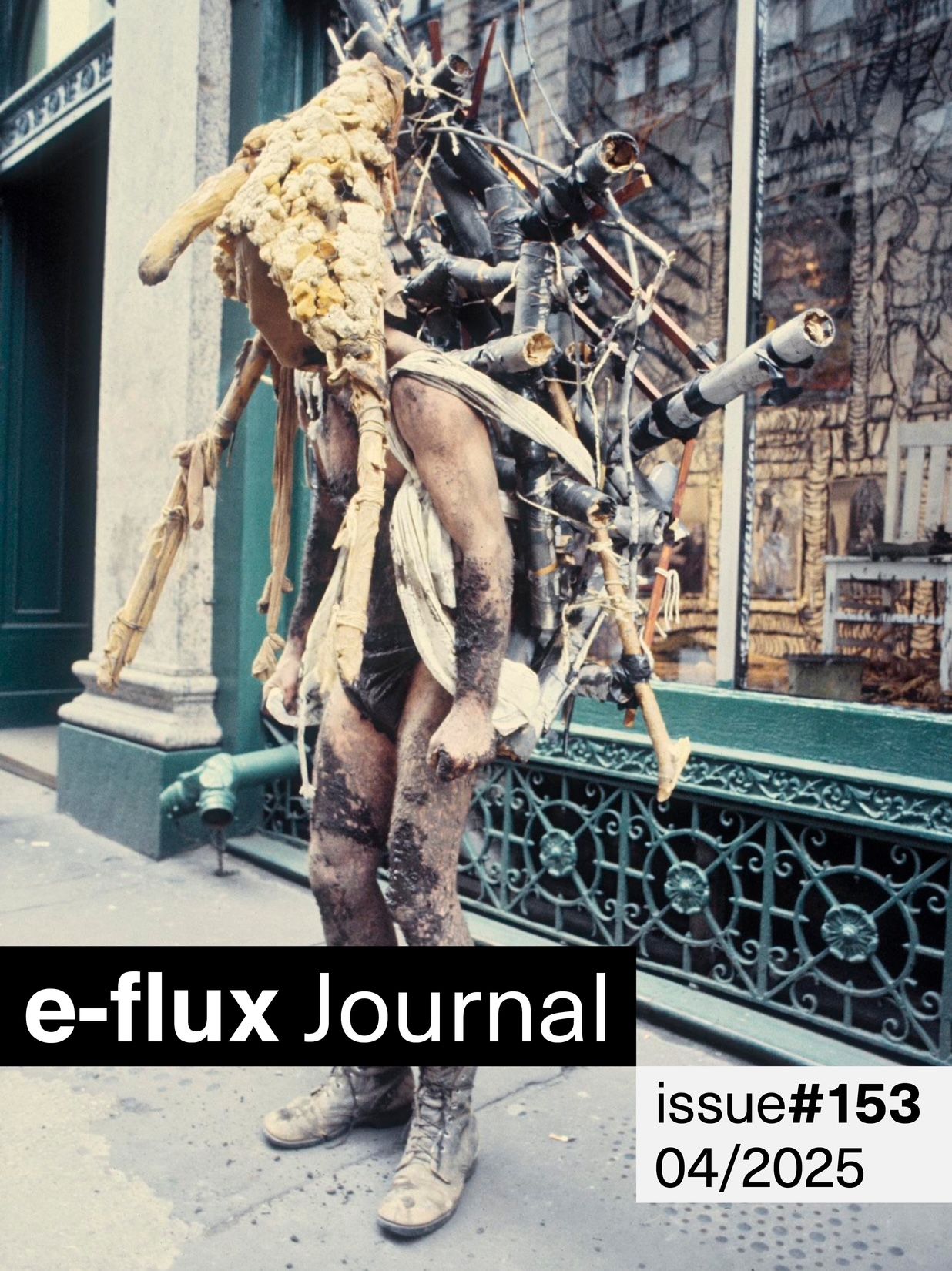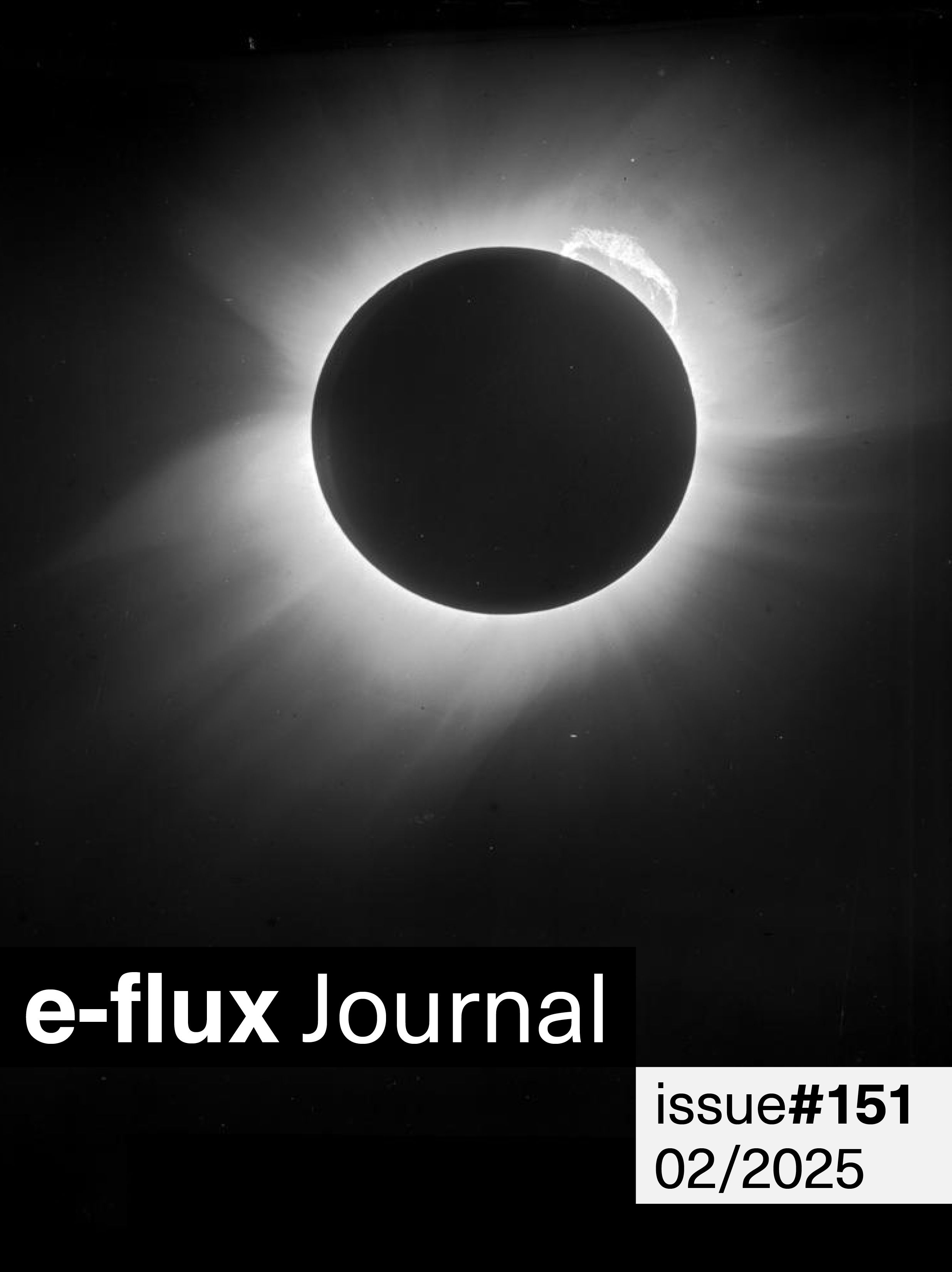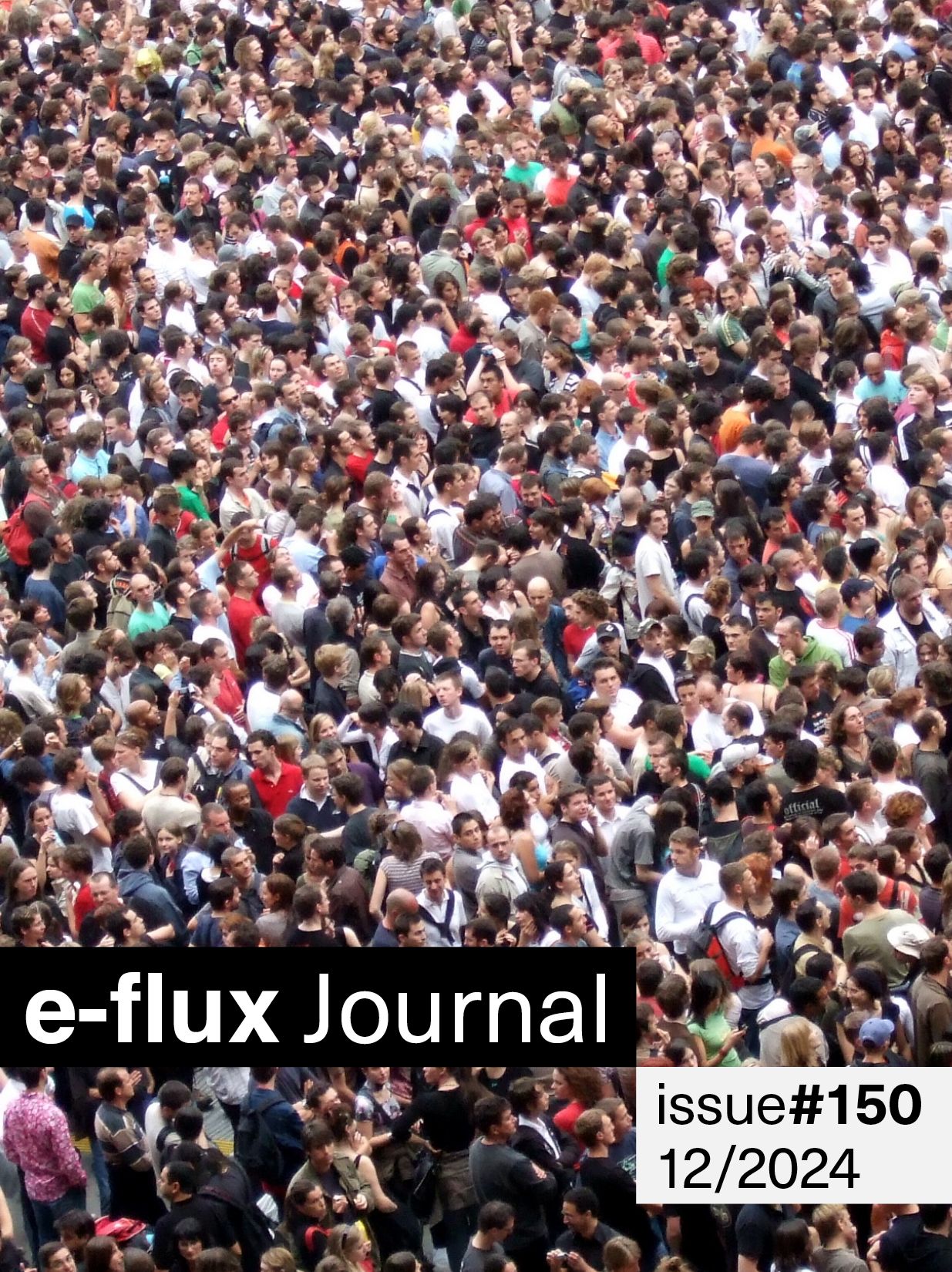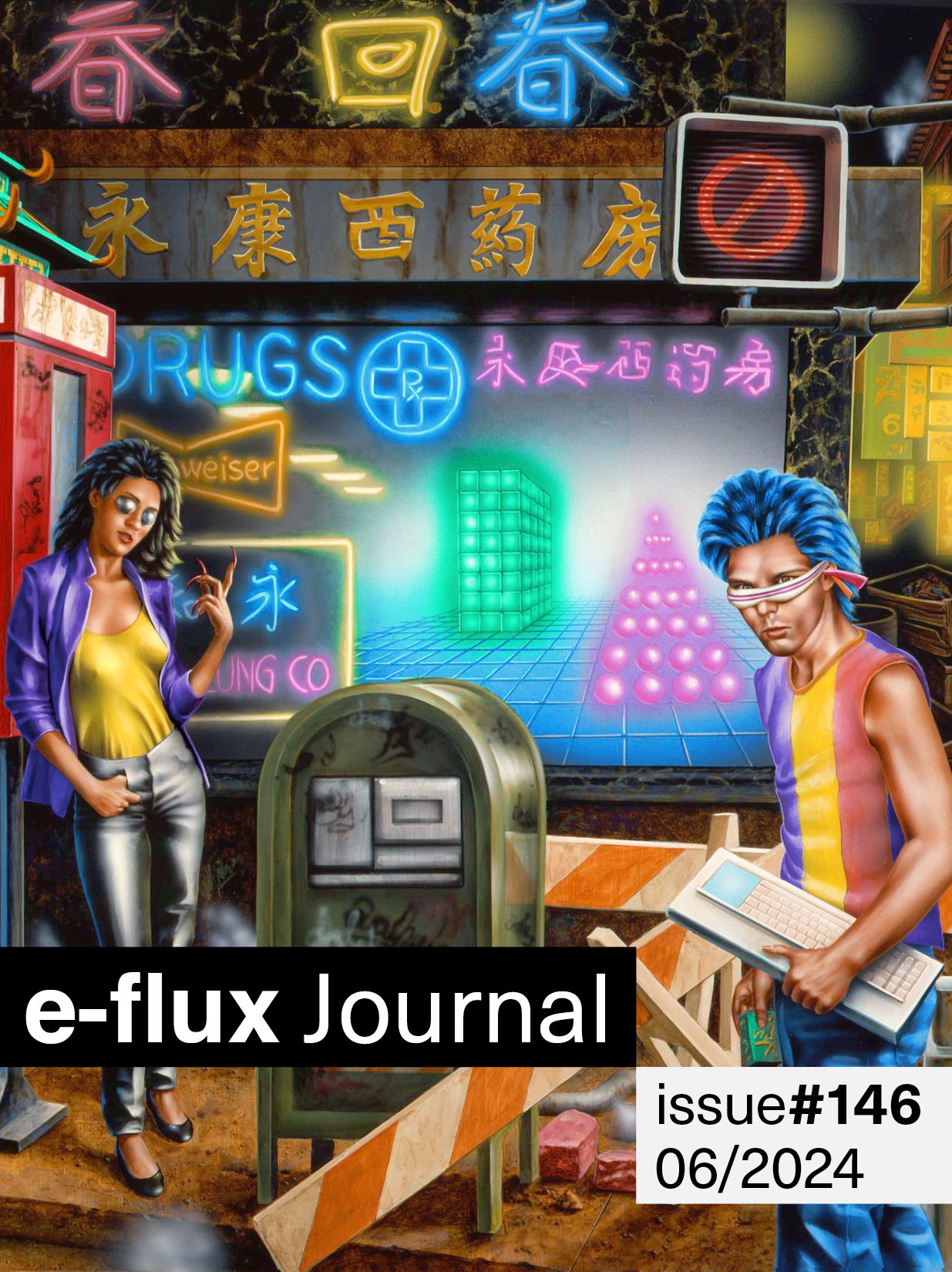e-flux journal issue 116
with Fred Moten and Stefano Harney, Tongo Eisen-Martin, Erica Hunt, Nora Treatbaby, Franco “Bifo” Berardi, Sasha Litvintseva and Beny Wagner, Tyler Coburn, Soo Hwan Kim, Maria Lind, and Boris Groys
We have never completely understood poetry. As a contemporary art publication, there’s no shortage of affection, admiration, or affinity for poetry, and e-flux journal has certainly published a few memorable poems over the years. But it always felt like a stroke of luck or a gift from the ether when someone brilliant would send us a poem. You won’t be surprised that this didn't happen often. But now is the time to change that, and we’re honored to welcome Simone White as e-flux journal’s first ever poetry editor. Simone is the author of the collections or, on being the other woman (forthcoming from Duke University Press), Dear Angel of Death, Of Being Dispersed, and House Envy of All the World, and lives in Brooklyn. We’re so glad that she’s joined us.
The journal’s inaugural poetry section features the work of three remarkable poets: Tongo Eisen-Martin, Erica Hunt, and Nora Treatbaby. By way of introduction, Simone writes:
“My selections are guided by a not-so-imaginary reader whose lust for the book is organized by chance. What is near to hand, on its way, minimally printed or unprintable, flippantly deposited in the bibliography: she reads that and chases down some more. She suspects that genius is abundant and irregular—not deep, not guarded by anybody. She is not a joiner. I wonder whether it is possible to think about whether the in-person reading will give way after the pandemic, as a heuristic and as a quasi-social aspect of poetry. In e-flux journal, I want the poetry to appear as great poems often do (to me), exploding full-grown out of the head of the main god, giving no clue as to what might have occurred at a less mature stage or what might have caused or preceded the thing. That doesn’t mean we cannot trace the poems’ development, although it can’t be tracked to a room or the poet’s City or a press because poetry is moving in a different circuit now, and its raised surface has to be felt in order to get any kind of knowledge of what the circuits are, how they are moving. You have to run your fingers across the poems as a group, like. Poems and people are in this extreme moment of mystery and anticipation, precipitated by our losses.
“The words among these poems I most want to point to are those of Erica Hunt: ‘We are beyond counting …,’ she writes. I take this to mean we are within incalculability, and I get a surge of joy thinking about the opportunity to be out of counting and how poetry might begin or has already begun to practice such non-numerosity.”
Also in this issue, Fred Moten and Stefano Harney talk with their publisher Stephven Shukaitis about a friendship so profound that it is a practice in itself. That’s how they describe the essence of their friend Zun Lee, whose photograph—part of his series on black fatherhood—is the cover of this issue. It’s not just that he’s their friend, but rather that he is a friend. As they explain, that is what he does. Moten and Harney talk about how their ongoing conversation, their new book, and their thought is fully populated with other figures. They share in “the anger of a common love,” in “being lost with others.” It’s a beautiful fullness to study, especially after a year of isolation.
Boris Groys explores the gap left open by the near disappearance of the critique of ideology amidst the proliferation of conspiracy theory. In the atomized world of internet discourse and followership, he argues that the critique of ideology becomes all the more necessary. Franco “Bifo” Berardi dissects the concept of freedom as claims to it mutate and morph between leftists and fascists in mid-pandemia. The rhetoric of freedom, he argues, is based on a misunderstanding, and autonomy, potency, and consciousness might help us find a way back out—or even back in. The artists and filmmakers Sasha Litvintseva and Beny Wagner go in search of a taxonomy of monsters, and find, between the pages of a sixteenth-century illustrated compendium, the monstrosity of taxonomies that arose in the age of Early Modern science and film.
Tyler Coburn thinks though the counterfactual: what that might have been if history had moved differently. Maybe mushrooms experimented on human soldiers during World War II. Maybe the Vietnam War era was replaced by a march toward an American universal basic income. Soo Hwan Kim wonders why Walter Benjamin and Sergei Eisenstein, whose work and worlds circled each other during the same period, never actually met. He finds common ground for them not in film, but in the looming presence of the glass house in architecture and literature before and during their tumultuous time. Maria Lind situates the curatorial through her time at Tensta Konsthall, in a northwestern suburb of Stockholm, where civic engagement negotiated disparate cultures, timescales, hardships, and politics, with an eye to intensifying our focus upon art in all its variety, but, as she suggests, “with new distinctions.”
—Editors
Fred Moten and Stefano Harney—Refusing Completion: A Conversation
We use the gaps and the pauses as ways to think more clearly and more effectively with one another and by way of one another and past the separation of one and another. There’s a rhythm. Definitely. But it’s an irregular rhythm. And not only irregular compared to some metronomic norm but irregular in being overpopulated. The beautiful thing about the polyrhythm is that even though it’s just the two of us, as Bill Withers and Grover Washington Jr. would say, it’s way more than that. Not only our parents, our families, our partners, and the various children in our lives, but also all these other people that we’re always working with and talking with and thinking with and reading with. There’s always a lot of sound in our head, and in our hands, too.
Tongo Eisen-Martin—Three Poems
Somewhere on the west coast, the third neighbor over doesn’t care about Maroon history… / and you’ve gone and forced his hand. This whole city started with an arranged strata / matrimony. Middleclass-ness, if the sky were to belong in a poem. The seat next to me is a place / of panic.
Erica Hunt—Excerpts from A Decolonized Memoir
Smell of rubber returns tread to the road, where we expect open vistas and find the windshield fogs the road, breaks up—a preview of the next few years—a caravan of rescissioned expectations, crab walk of wish and detachment, inventories “looking to a future that wasn’t coming as expected.”
Nora Treatbaby—Three Poems
a word / is unlivable / just go out / and scream / the crisis / in each / sound / be gay
Franco “Bifo” Berardi—Freedom and Potency
How can we explain the fact that some anarchists and many other leftists are respecting health rules dictated by a “state of exception,” while fascists are the ones reclaiming their freedom to do whatever they like? There is a comedic exchange of roles, whereby fascists proclaim themselves as the “defenders of freedom” and progressives emerge as the defenders of the law.
Sasha Litvintseva and Beny Wagner—Monster as Medium: Experiments in Perception in Early Modern Science and Film
One, two, three, four—and a plant framed in the middle of the shot is ripped out from the ground with its severed roots dangling in midair. The seeming oxymoron of a “taxonomy of monsters” can also be displaced and reencountered in the monstrousness of taxonomies as such; they sever specimens from the fluid integrity of the environments they inhabit, and which inhabit them, in order to monstrare: reveal, show, demonstrate. They cut apart the world, just as surgeons cut into the flesh. And what is more uniquely cinematic than the cut? What aspect of film more monstrous?
Tyler Coburn—Counterfactuals
I had seen the banner before; it was made by the former dean of the School of Military Design at Pratt. The SMD dates back to World War II when the institute, rising to meet the moment, ran an Industrial Camouflage Program and recruited students on campus. Five alumni of the time, including Ellsworth Kelly, became known for their service in the “Ghost Army,” a unit that employed creative tactics—inflatable tanks, phony radio transmissions, even fake generals—to deceive German forces. Pratt leveraged their success and built lasting ties with the military, creating a new model of art school.
Soo Hwan Kim—A Cultural Genealogy of The Glass House: Reading Eisenstein with Benjamin
The problem is that connecting the two figures through the link of cinematic perception has many limitations. Both figures and their concerns aimed beyond “art” and toward “history.” For both of them, cinema (and its study) was only a contemporary version of a larger “fundamental problem” (Grundproblem). The two thought “through” cinema, and it is necessary to find their intersection on a broader horizon “outside” cinema.
Maria Lind—Situating the Curatorial
Every time I hear the argument in politically engaged art circles that art-making as we know it—whether discrete art objects, research-based work, or more performative practices—cannot continue under the conditions imposed by the politics of hard-line right-wing governments, I am reminded of Refined Still Life #1. Because I disagree: now is the time to intensify our focus upon art as it has been practiced, in all its variety—perhaps with new distinctions.
Boris Groys—Discourses of Distrust: Conspiracy Theories and the Critique of Ideology
The discourse of Marxism, on the contrary, produces not trust but distrust. Marxism is basically a critique of ideology. Marxism looks not for a “reality” to which a particular discourse allegedly refers but to the interests of the speakers who produce this discourse—primarily class interests. Here the main question is not what is said but why it is said.


